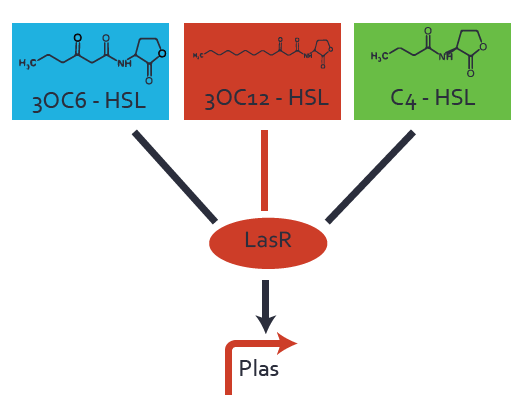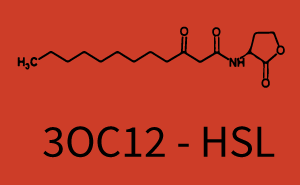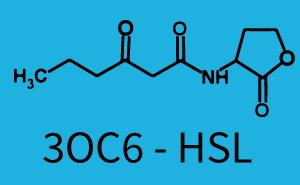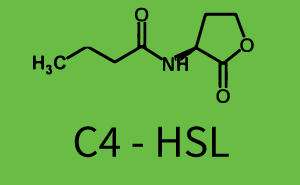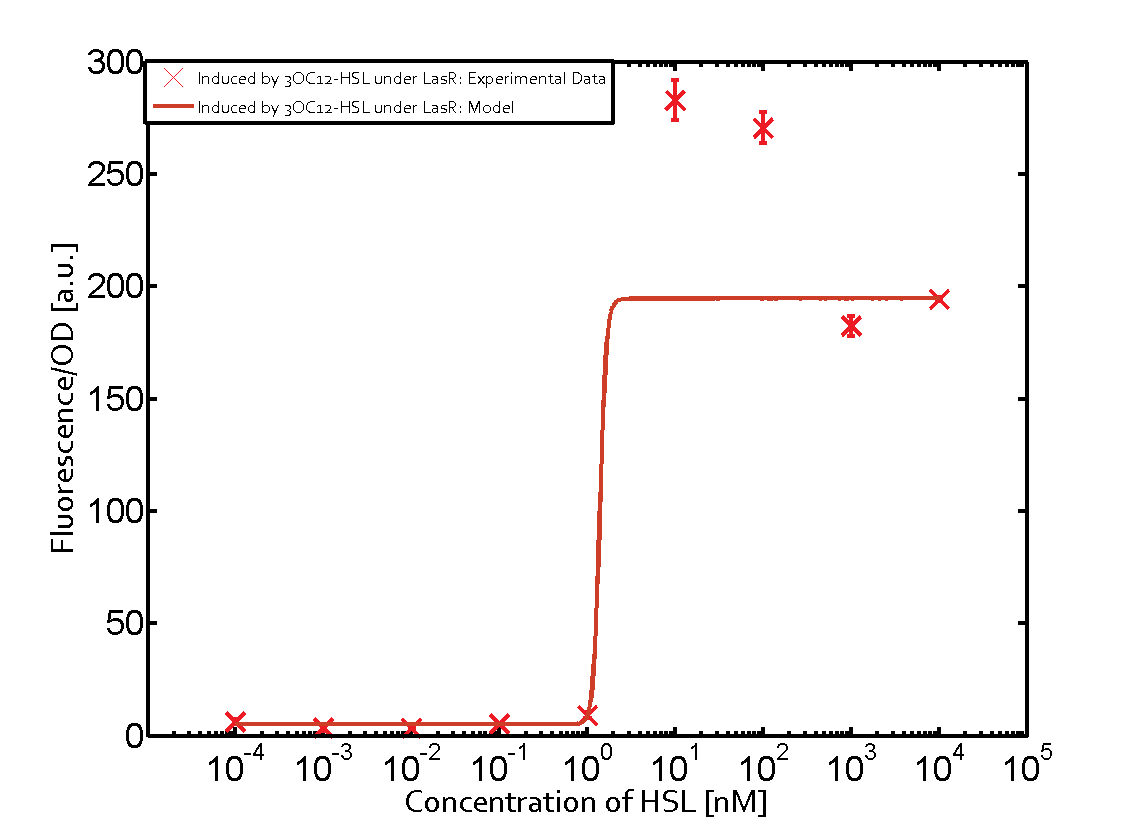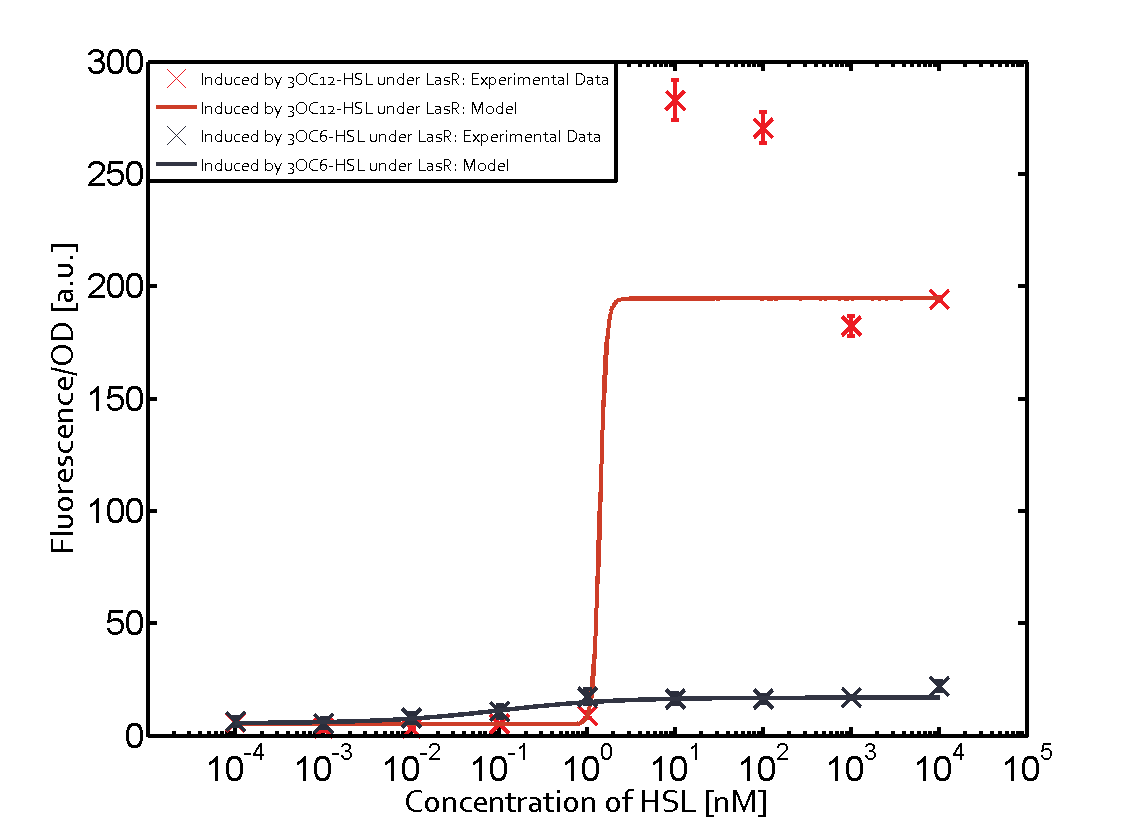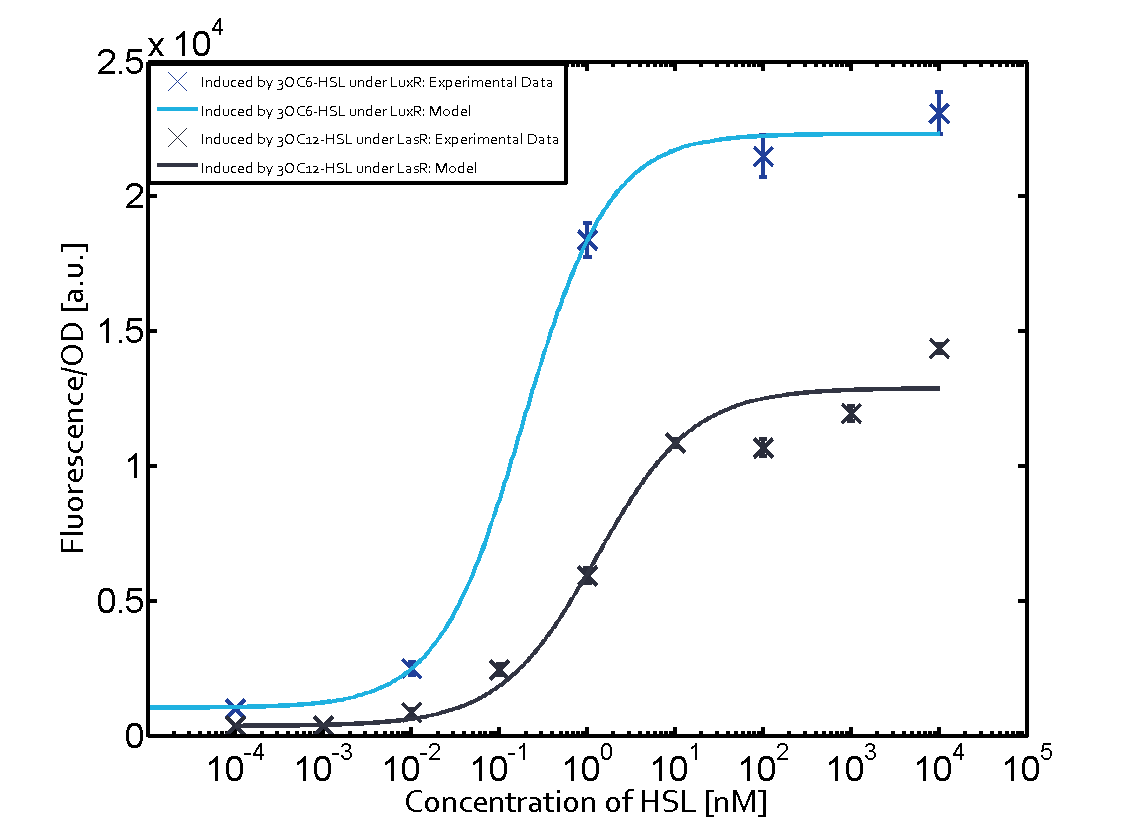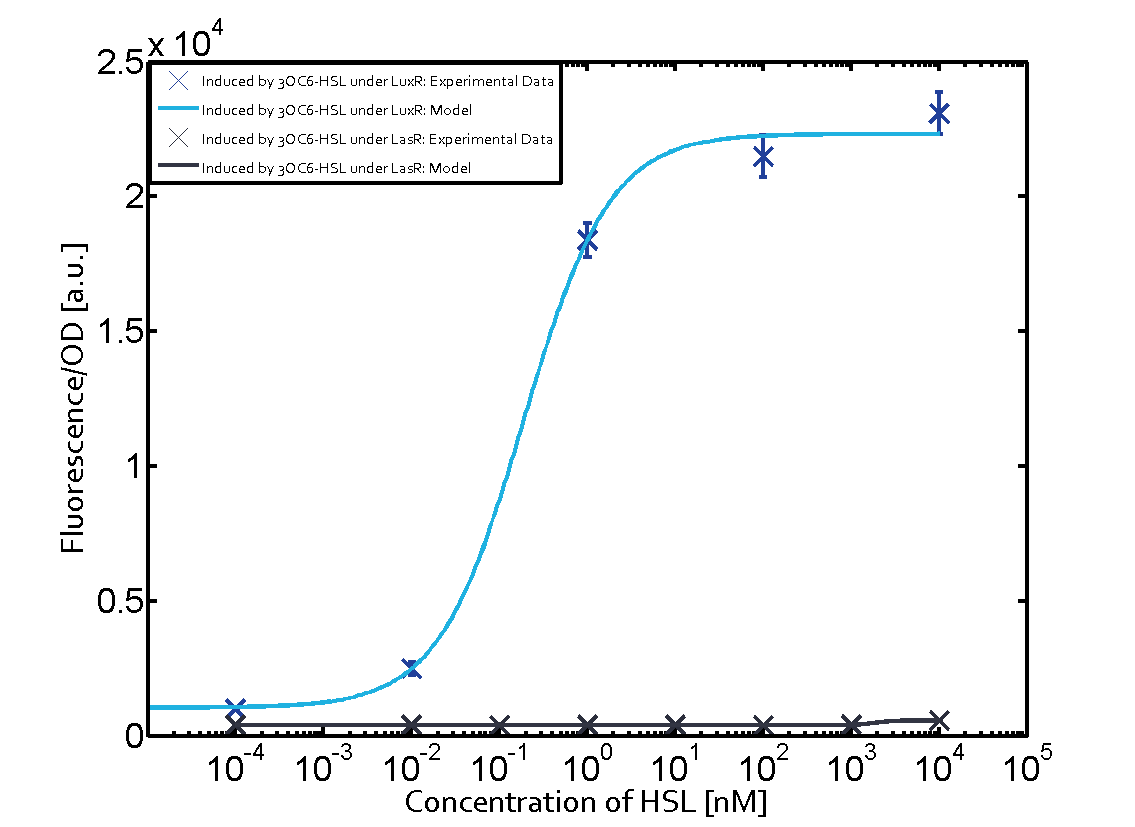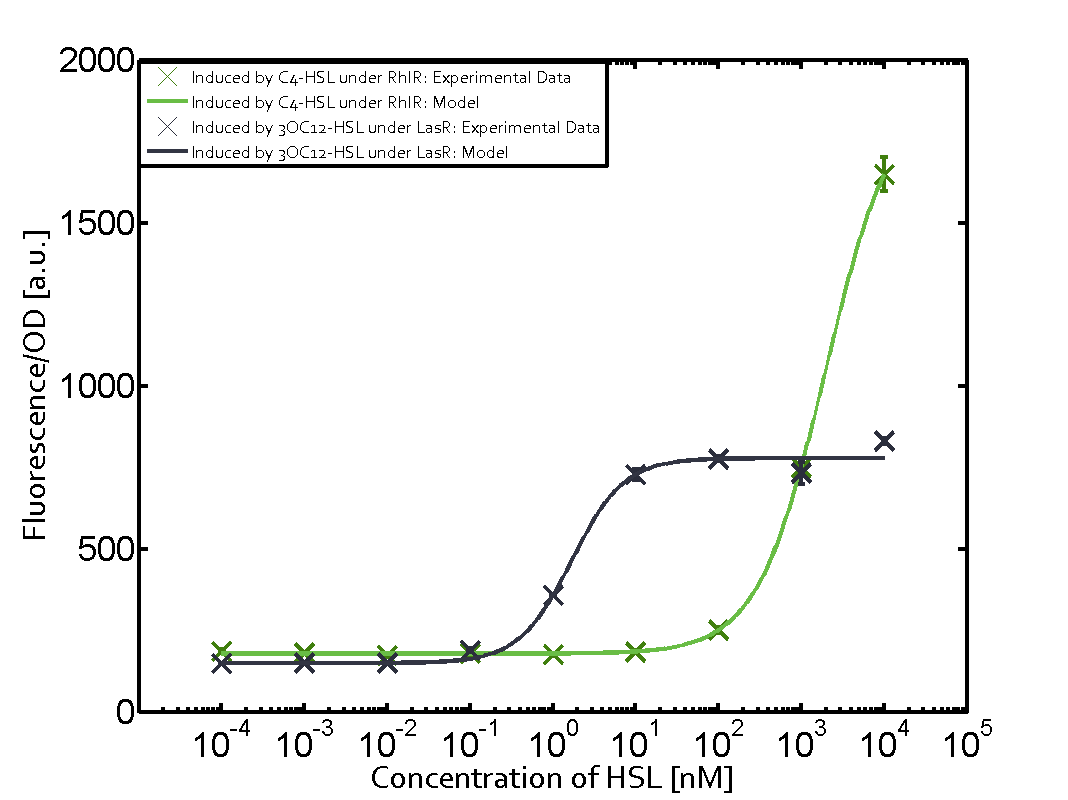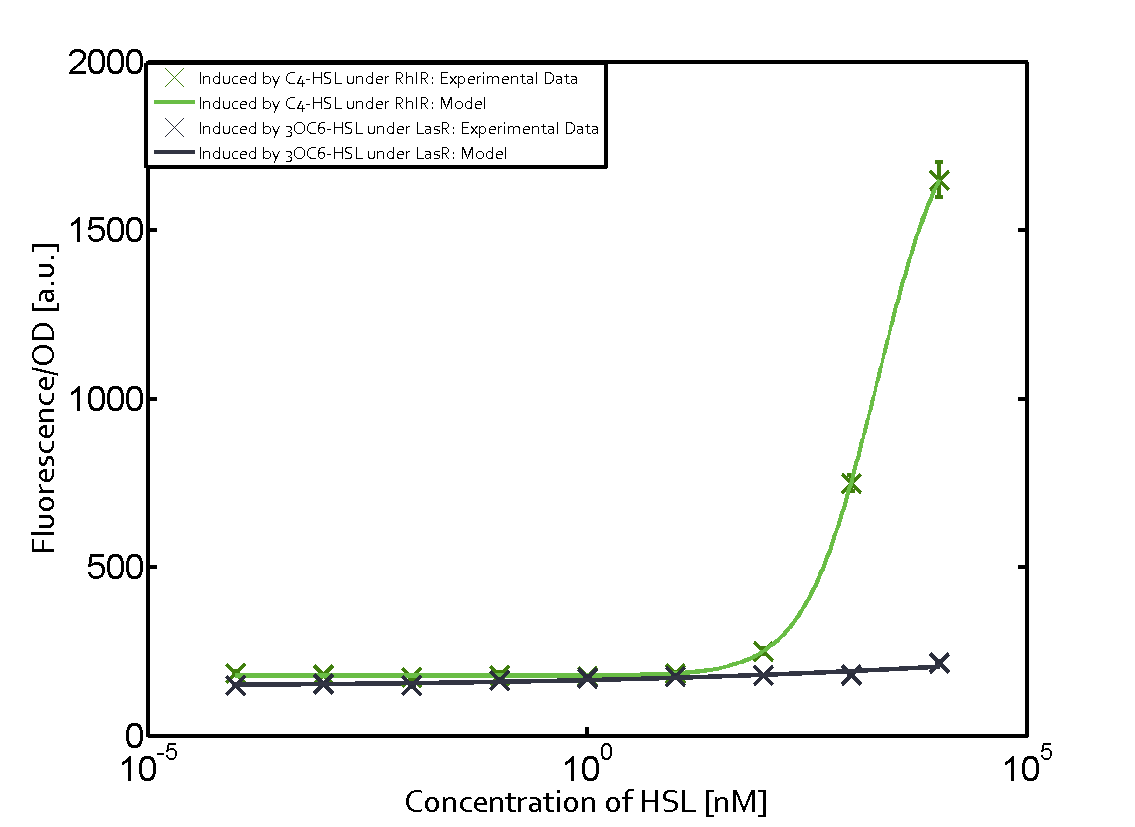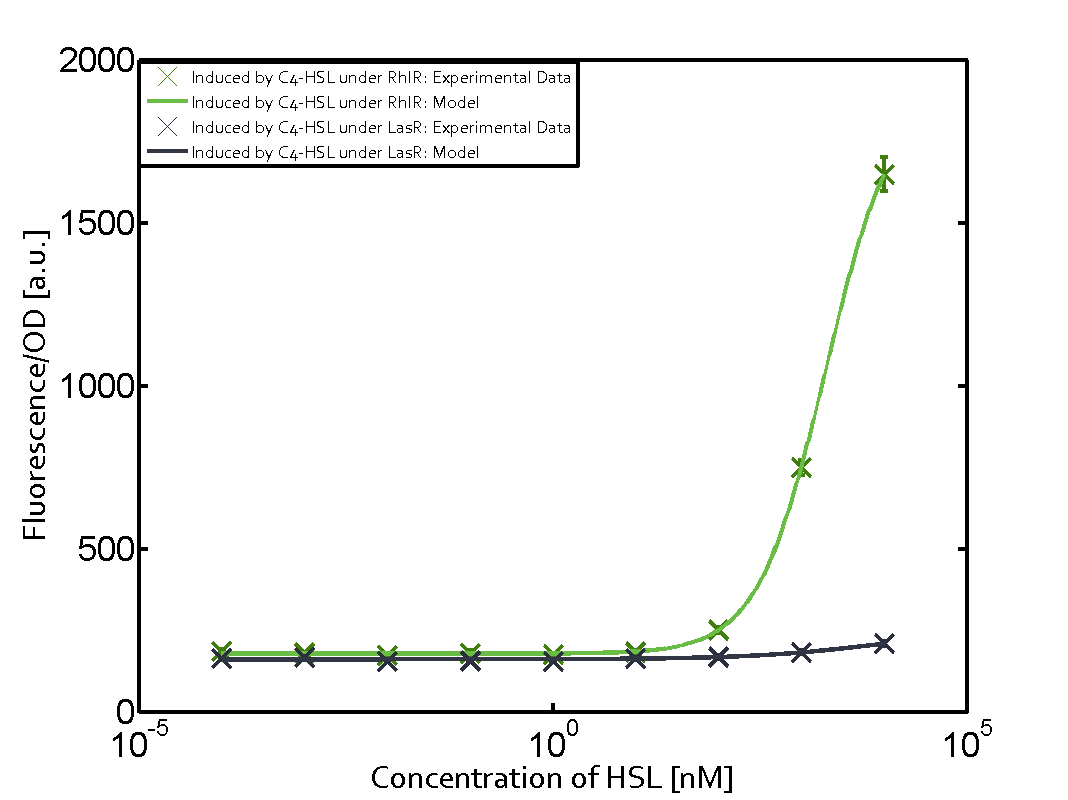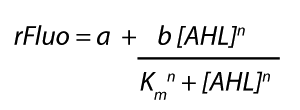Part:BBa_C0179:Experience
This experience page is provided so that any user may enter their experience using this part.
Please enter
how you used this part and how it worked out.
Applications of BBa_C0179
User Reviews
UNIQ42c0790483102178-partinfo-00000000-QINU
|
••••
ETH Zurich 2014 |
Background informationWe used an E. coli TOP10 strain transformed with two medium copy plasmids (about 15 to 20 copies per plasmid and cell). The first plasmid contained the commonly used p15A origin of replication, a kanamycin resistance gene, and one out of three cell-cell signaling promoters (pLux, pLas, or pRhl) followed by RBS (BBa_B0034) and superfolder green fluorescent protein (sfGFP). In general, for spacer and terminator sequences the parts BBa_B0040 and BBa_B0015 were used, respectively. The second plasmid contained the pBR322 origin (pMB1), which yields a stable two-plasmid system together with p15A, an ampicillin resistance gene, and a strong promoter (BBa_J23100) chosen from the Anderson promoter collection followed by LasR (BBa_C0179). The detailed construct designs and full sequences (piG0040, piG0058, piG0059,piG0059) are [http://2014.igem.org/Team:ETH_Zurich/lab/sequences available here]. Experimental Set-UpThe above described E. coli TOP10 strains were grown overnight in Lysogeny Broth (LB) containing kanamycin (50 μg/mL) and ampicillin (200 μg/mL) to an OD600 of about 1.5 (37 °C, 220 rpm). As a reference, a preculture of the same strain lacking the sfGFP gene was included for each assay. The cultures were then diluted 1:40 in fresh LB containing the appropriate antibiotics and measured in triplicates in microtiter plate format on 96-well plates (200 μL culture volume) for 10 h at 37 °C with a Tecan infinite M200 PRO plate reader (optical density measured at 600 nm; fluorescence with an excitation wavelength of 488 nm and an emission wavelength of 530 nm). After 200 min we added the following concentrations of inducers (3OC6-HSL, 3OC12-HSL, and C4-HSL): 10-4 nM and 104 nM (from 100 mM stocks in DMSO). Attention: All the dilutions of 3OC12-HSL should be made in DMSO in order to avoid precipitation. In addition, in one triplicate only H2O was added as a control. From the the obtained kinetic data, we calculated mean values and plotted the dose-response-curves for 200 min past induction.
Characterization of crosstalkBackground informationHere, we focus on the characterization of crosstalk of BBa_C0179 LasR with different AHLs and further crosstalk of LasR-C4-HSL with the three promoters - pLux, pLas, and pRhl. In the following, we describe results for all the different levels of crosstalk we have assessed. First-order crosstalkIn the first order crosstalk section we describe crosstalk of pLas due to LasR binding to inducers different from 3OC12-HSL or pLas itself binding to a regulator-inducer pair different from LasR-3OC12-HSL. First Level crosstalk: LasR binds to different HSL and activates the promoter PlasIn the conventional system 3OC12-HSL binds to its corresponding regulator, LasR, and activates the pLas promoter (figure 2, red). However, LasR can potentially also bind other AHLs and then activate pLas (figure 2, 3OC6-HSL in light blue and C4-HSL in green). Second Level crosstalk: LasR binds to 3OC12-HSL, its natural HSL, and activates different promoterSecond order crosstalk: Combination of both cross-talk levelsResults
Modeling crosstalkEach experimental data set was fitted to an Hill function using the Least Absolute Residual method. The fitting of the graphs was performed using the following equation :
| ||||||||||||||||||||||||||||||||||||
|
Antiquity |
This review comes from the old result system and indicates that this part did not work in some test. |
|
No review score entered. Northwestern 2011 |
The 2011 Northwestern iGEM team used this part as a part of our Pseudomonas Aeruginosa biosensor. We were able to successfully express RhlR (C0171) continuously in our system. BBa K575032 |
|
•••••
iGEM Dundee 2014 |
Dundee iGEM 2014 used this lasR coding sequence to build two composite parts termed BBa_K1315009 and BBa_K1315010. These were designed as biosensors for Pseudomonas aeruginosa AutoInducer-1 (PAI-1), and were to be used in a bio-electronic device to improve diagnostics for Cystic Fibrosis patients. Details of experimental work are logged on the experience pages of BBa_K1315009 and BBa_K1315010. |

 1 Registry Star
1 Registry Star